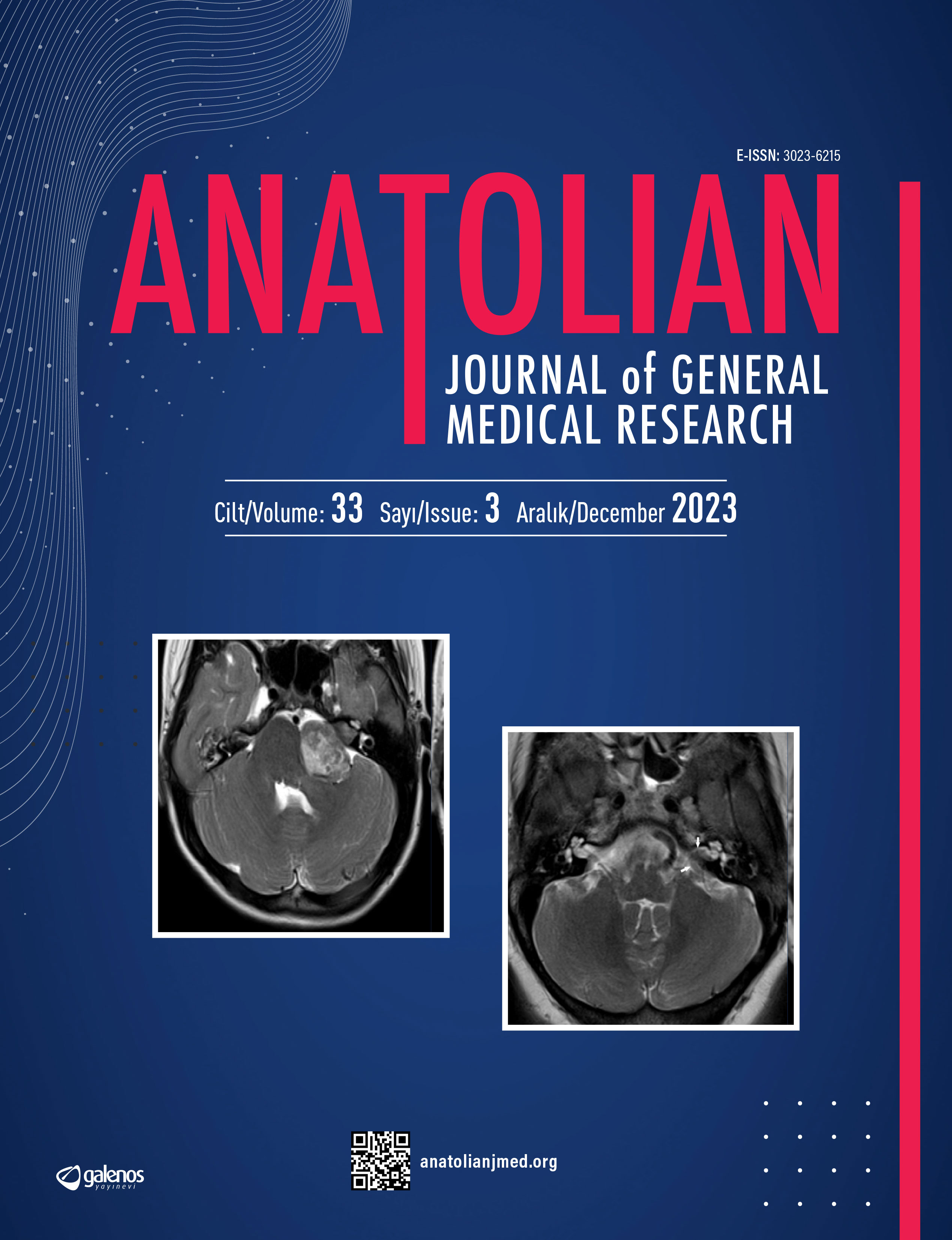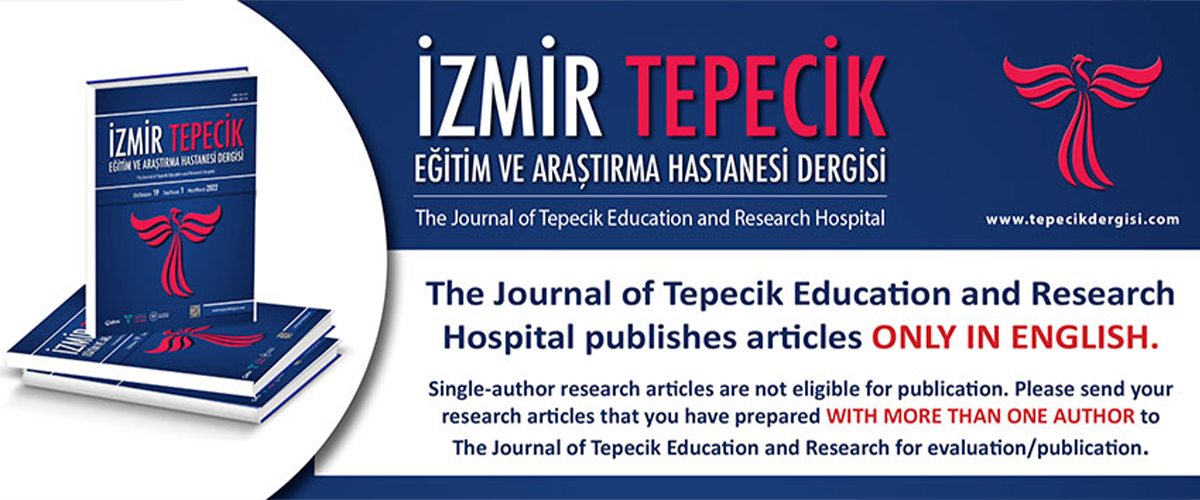








Are Giant Cell Tumors of Tendon Sheath Neoplastic or Reactive?
Enver Vardar1, Şehnaz Sayhan1, Özlem Türelik1, Deniz Altınel1, Ümit Bayol1Tepecik Eğitim ve Araştırma Hastanesi, Patoloji Labaratuvarı, İzmirAIM: Neoplasms of the hand and foot are not seen commonly and giant cell tumor of tendon sheath (GCTTS) is the most common primary tumor of the hand. Many different theories have recently been proposed as to whether GCTTS is a neoplasm or a localized reactive process. The nature of this lesion is still controversial: some researchers consider it a reactive process arising from chronic inflammation while others regard it as a tumor of presumed synovial cell or monocytic macrophage system origin. In an effort to clarify the histogenesis of GCTTS, we decided to further investigate retrospectively the possible etiopathogenetic agent in histochemically stained slides. MATERIAL AND METHOD: We studied 34 GCTTS of the fıngers using a panel of five histochemical stains, periodic acid Schiff (PAS), PAS with diastase and Gomoris' methenamine silver stain for fungi, gram stain for microorganism and finally Ziehl-Nielsen stain for acido-resistant bacteria. FINDINGS: The examination of fıve different type histochemical stained slides in light microscopy revealed that there were no possible etiopathogenetic agent, microrganism or fungi in GCTTS. CONCLUSION: Although the origin is still not proved, the presentation, diagnosis, and treatment of GCTTS have been clear for a long time. Our results ernphasize that stained slides with fıve histochemical staining methods do not define a infectious origin. It remains to be determined whether GCTTS is a reactive or hyperplastic process. The issue of etiopathogenesis of GCTTS needs advanced studies include larger series, with sophisticated tehnique like subcellular and different histochemical and/or immunohistochemical stains.
Keywords: Giant cell, Neoplasm, Tendon sheatTendon Kılıfının Dev Hücreli Tümörleri Neoplastikmi Yoksa Tepkisel Midir?
Enver Vardar1, Şehnaz Sayhan1, Özlem Türelik1, Deniz Altınel1, Ümit Bayol1Tepecik Eğitim ve Araştırma Hastanesi, Patoloji Labaratuvarı, İzmirAMAÇ: El ve ayak parmaklarında yerleşmiş neoplaziler sık olmayıp, tendon kılıfının dev hücreli tümörü (TKDHT) elde görülen en sık primer tümördür. TKDHT'ünün neoplazi mi yoksa tepkisel bir süreç mi olduğu konusunda çok farklı teoriler öne sürülmüştür. TKDHT'ünün etyopatogenezi halen belirsiz bir antitedir. Bazı araştırmacılar kronik yangıdan gelişen reaktif süreç olduğunu, diğer bazı araştırmacılar ise sinovyal hücre veya monositik makrofaj sistemi kökenli tümör olduğunu ileri sürmektedirler. TKDHT'ünde histogenezi belirlemek için, olası etyopatogenetik etkenleri, varsa, dokukimyasal olarak boyanmış preparatlarda aramayı hedefledik. GEREÇ VE YÖNTEM: El ve ayak parmaklarında yerleşen 34 TKDHT'ünde yapılan geriye dönük değerlendirmede, mantar için periodik asid Schiff (PAS), diyastazlı PAS ve Gomori metenamin gümüş (GMS), mikroorganizmalar için gram boyası ve aside-dirençli bakteri için de Ziehl-Nielsen boyaları uygulandı. BULGULAR: Beş farklı türde dokukimyasal boya uygulanmış preparatların ışık mikroskobik incelemesinde, olası etyopato-genetik ajan, mikroorganizma veya mantar görülmedi. SONUÇ: TKDHT'ünün kökeni halen belirsiz olmakla birlikte, kliniği, tanısı ve tedavisi ile ilgili olarak, uzun süredir belirsizlik söz konusu değildir. Beş farklı histokimyasal boyalı preparatların incelemesinde infeksiyöz köken düşünüleme- miştir. TKDHT'ünün tepkisel mi, yoksa neoplastik mi olduğu konusu hala tartışmalıdır. TKDHT'ünde etyopatogenezin ortaya konması için, geniş olgu sayıları içeren, subsellüler, farklı histokimyasal ve imunhistokimyasal boyaları içeren çalışmalara gereksinim vardır.
Anahtar Kelimeler: Dev hücre, Tendon kılıfı, TümörManuscript Language: Turkish
(1191 downloaded)




